
After two games of Artifact I'm left with a splitting headache and an exhausted grin. Before tonight, all we really knew about Valve's Dota 2-themed card game was that it would use three lanes and that the announcement received a famously rough reception at The International last year. After tonight, it feels like I have more information than I can fit into my skull, but I'm certain Artifact is going to be the new card game hotness when it goes into full release later this year.
The easiest way I can describe playing it is to imagine managing three games of Hearthstone at once, each of which can affect the other in multiple ways which are changing from moment to moment. Or, to put it another way, if conventional card games are like chess (which I know they aren't), then Artifact is the 3D version which Spock plays on the Enterprise. Which, I guess is exactly what I should have expected from Valve.
At the beginning of August, Valve announced that Artifact will release on November 28. The launch version will include more than 280 cards, and will cost $20. If you're headed to PAX Prime, it'll be playable there ahead of release.
Arriving at its plush new Seattle office, one of the things I most want to know is what kind of talent Valve has hired to work on Artifact. The answer comes almost immediately as part of Gabe Newell's introductory presentation: they're working with Richard Garfield, the legendary creator of Magic: The Gathering, and undisputed OG of trading card games. Newell compares Garfield to IceFrog, the secretive overmind behind Dota 2, saying that the chance to work with their kind of talent is like having "the shiniest saw or pickaxe imaginable… the things I can build with this will be amazing." Garfield later tells me that he came aboard in 2014, having spent years wrestling with how to make an electronic game that solved the problems Magic has.
Both Newell and Garfield are at pains to point out that the idea of making a killer card game came before—and matters more—than the idea that it should be set in the Dota 2 universe. If either Team Fortress 2 or Half-Life had offered a better fit, then that's the world that would have been chosen. It's also worth noting that Artifact will not be a subordinate little sibling to Dota 2. Many of the heroes in the current card set are existing Dota 2 champions, but others are original creations. And as the game expands, Valve expects some characters will begin life in Artifact before later appearing in Dota 2. There's a ton more context to talk about, but you want to know how it plays, so let me lay out some basics as clearly as I can. Be warned, here be bullet points.
How Artifact works
- Each deck contains 40 cards and includes 5 heroes (which is the same as a Dota 2 team). There will be 280+ cards in the base game. There are 44 heroes. You can include three copies of each card in your deck.
- Your cards and heroes are selected from four possible colours: Red, Green, Black, and Blue. As per Magic, each colour has its own personality which themes what its cards do accordingly.
- At the beginning of the game your first three heroes will be deployed evenly into the three lanes (which are essentially game boards), along with some randomly spawned melee creeps. After each round, two more creeps will spawn in random lanes on each players' side.
- Each lane contains a tower which has 40 health which you must protect. Lose two towers and the game is over. Once a tower is destroyed, it's replaced by the Ancient, which has 80 health. Destroy an Ancient and you also win the game.
- Heroes that are killed aren't gone for good, they just have to sit out an entire round, after which you can choose which lane to redeploy them in. (An exception here is a green hero who has a 'rapid deployment' ability and can be sent back into the fray in the next round.)
- Each lane also has its own Mana pool, which begins at 3 and increases by 1 with each turn—though you can also use Ramp cards to accelerate your Mana pool. Hey, it's a Richard Garfield game.
- In order to play a card, you must have a hero of the corresponding colour placed in the lane where you're spending the mana. However, Mana spent in one lane can be used to cast certain cards in other lanes.
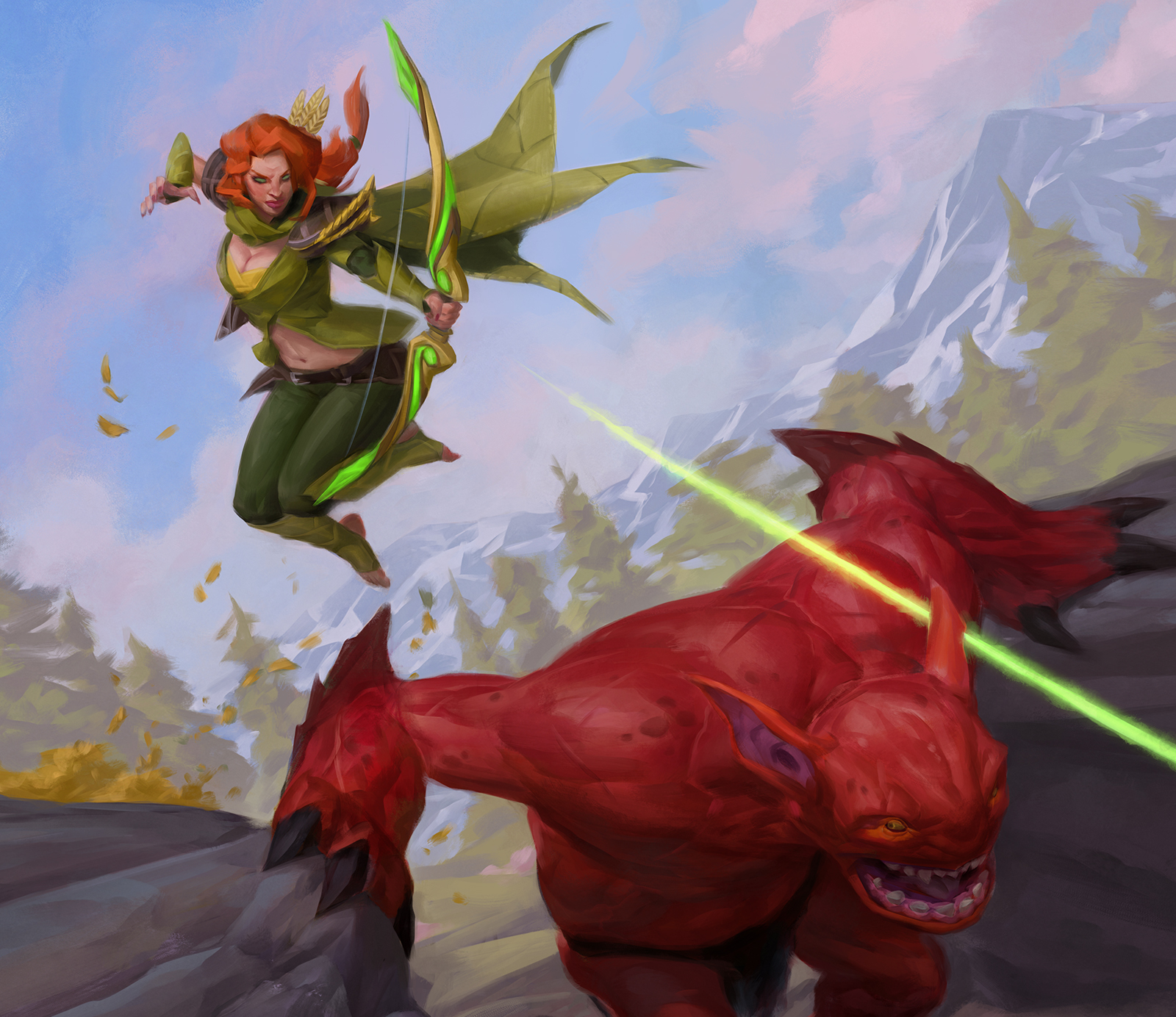
Artifact won't be on mobile this year, but will hit iOS and Android in 2019. It'll be the first Source 2 game on Apple devices.
- Each time you play a card of any sort the initiative passes to your opponent. Once you've both finished taking it in turns to play a cards in a particular lane, combat occurs with heroes and creeps attacking whatever is opposite them. If they aren't facing another unit, they will attack the opposing tower.
- After combat, the action then switches to the next lane. The idea of player initiative is carried over to the next round, which ends when you're both done in the third and final lane.
- As enemy cards are destroyed you will accrue gold. Certain cards can also affect gold generation, such as black's 'Day at the Track' which doubles your gold total. Gold is spent on equipment between rounds during the Shopping Phase.
- Only heroes can use equipment, and each hero has three slots: weapon, armor, and accessory. If you want to use a different weapon it will overwrite the current one.
- Equipment varies from cheap simple buffs like a cloak which gives your hero +1 health through to powerful, expensive stuff like the Apotheosis Dagger which adds +8 attack, +4 siege (tower damage that can't be blocked), and condemns (ie kills) any enemy it hits.
- Importantly, equipment on characters is persistent. So buffed heroes will keep coming back with their upgraded stats and abilities.
Still following? As I said at the top, there's a deluge of information to take in, and at first I felt like I was floundering. Handily, each of us had a member of the Valve brain trust sat with us to help discuss plays and explain mechanics, some of which were familiar, others less so. In my first game, I used an aggressive Black-Red deck, buffed my heroes early and hard, and was able to crush my slower Blue-Green opponent by going all-in on two lanes before his big bomb cards like a symmetric board clear called, accurately, Annihilation came online.
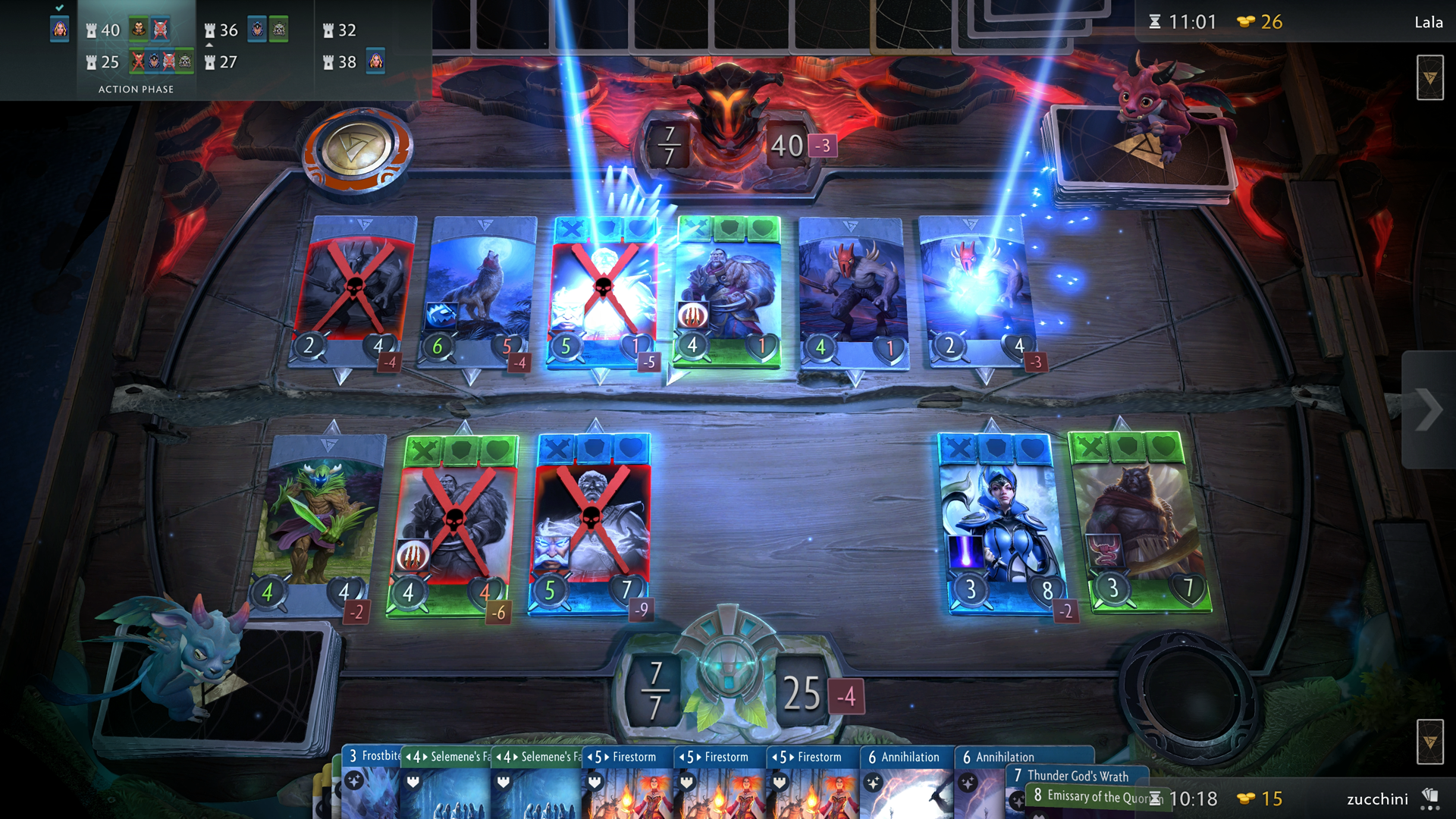
For the second match we switched decks, and the game was much more drawn out and nail biting. This time I was the one having to stall across multiple lanes, trying to buy time for my powerhouse spells. Probably my single favourite play involved switching the position of two heroes, triggering a ping effect from Zeus which cleared one creep and also applied an adjacency buff with my other hero. That move drastically altered the combat math in my favour, turning a lane that had looked lost into one I was now dominant in. I'd like to pretend I spotted this masterstroke on my own, but Valve's Kyle Davis has to take some credit. Those of you at home won't be so lucky to have him on hand, and make no mistake this is a ferociously, unabashedly complex take on the genre.
Before we sat down to play, Newell said that it was possible to have 100 units in a lane and I assumed he was exaggerating. He was not. You can indeed jam as many units into a lane as you can afford. They will disappear out of view off to the side, but you can slide back and forth with the mouse wheel to see them. You can also double click to zoom out and view all three lanes simultaneously, which proves essential for keeping a clear sense of the overall game state. While we're talking about scale, I should also mention that there's no limit on the amount of cards your hand can hold. Each round you will draw two new cards, in addition to whatever equipment you've splurged on in the shop, so it rarely feels like you're stuck with nothing to do.
Keep up to date with the most important stories and the best deals, as picked by the PC Gamer team.
Fighting on three fronts
There's a lot going on here. If, like me, you're coming into Artifact from the world of Hearthstone, then it's going to feel like plunging headfirst into a lake of liquid nitrogen. A niggling part of me wonders if the fact that Valve is staffed entirely by geniuses might mean it risks overestimating the appetite for quite this much complexity. I don't think Blizzard keeps Hearthstone games so simple and (mostly) short just because that's the easiest thing to do—it genuinely believes that's what time-challenged players looking to have fun want. But then Artifact probably isn't for 'most players' in the same way that Dota 2's insane skill cap isn't. Newell told us he's put 10,000 hours into Dota 2. "I'm still convincing myself—although, some people around here may disagree—that I'm becoming a better player."
That kind of ceiling is what Valve seems to want for Artifact. And let's face it, that amount of depth, bracing though it may be, is also going to excite a lot of people—particularly those who grew up on Magic or who've grown tired of the linear strategies in other digital card games that can make playing the same matchups feel so tiresome. Crucially, Artifact isn't a collectible card game at all—it's a trading card game. This is arguably the biggest deal about Artifact: you will be able to swap and sell individual cards on the Steam Market, whereas trading is something Hearthstone has always been staunchly against.

Artifact's pricing system
Valve's pricing structure has caused controversy. The base game costs $20, and comes with a pack of starter cards. To get more cards you can buy booster packs for $2, buy specific cards from the marketplace. Alternatively you can buy tickets to access gauntlets that reward you with more card packs if you can put together a good enough win streak. Here's how that breaks down.
Expert Constructed/Phantom draft—1 ticket entry fee
3 Wins:1 event ticket reward
4 Wins: 1 event ticket + 1 pack reward
5 Wins: 1 event ticket + 2 packs reward
Keeper draft—2 event tickets + 5 packs entry fee
3 Wins: 2 event tickets + 1 pack
4 Wins: 2 event tickets + 2 packs
5 Wins: 2 event tickets + 3 packs
Prior to launch the community is worried that card packs will contain duplicate starter cards that will be worthless in the market. Valve has responded to say that in a future update players will be able to recycle unwanted cards for event tickets. You can't trade cards, so in the game's current state players will always have to pay to access new cards.
Before the market is live and open to the public, we can't know how much cards will end up costing, which makes the game look like a bottomless spending pit to some. The systems are subject to change as Valve takes on community feedback.
The importance of trading
The sense from Valve is threefold. 1) Trading will take the sting out of hoping to pull the card you want from a pack, but only getting filler. 2) Each player's collection will retain value in the same way that binders of Magic cards do in real life. In contrast, if I stopped playing Hearthstone tomorrow, I couldn't sell my cards. Hell, Blizzard's small print means I can't even leave the account to someone in my will. 3) Valve knows how to do trading. It already has the tech to make it safe and secure, and it's learned a lot of lessons from CS:GO and Dota 2.
I wonder, though, if there's a risk that a volatile market could bring its own problems. After all, CS:GO has some crazy expensive skins. Valve's Brandon Reinhart isn't worried. "If a card has got a [top pro's] signature on it, and there's only one of those in existence, and that player won a major tournament, then it might have some value, and that is fine. But as far as the unsigned normal versions of that card, over the years we've developed a lot of tools in order to make sure that we're keeping those prices in a reasonable range." Reinhart also referred to a point Newell made about the power level of cards not being correlated to their rarity, and noted that common cards are going to cost "pennies".
From a really high level perspective, we really want to stay away from pay-to-win
Gabe Newell
Here's exactly what Newell had to say about the relationship between card rarity and power: "From a really high level perspective, we really want to stay away from pay-to-win. We think that that actually has a pernicious impact on the design of the game and the evolution of the community over time… There are plenty of very common cards that are going to be super powerful. The whole point is to steer away from pay-to-win and that kind of approach. We always want to reward investment. You always want to feel like, as a player, that the more time you spend on it, you're getting better and you're enjoying it more. We've all played plenty of games where you put in the hundred hours and you really are done."
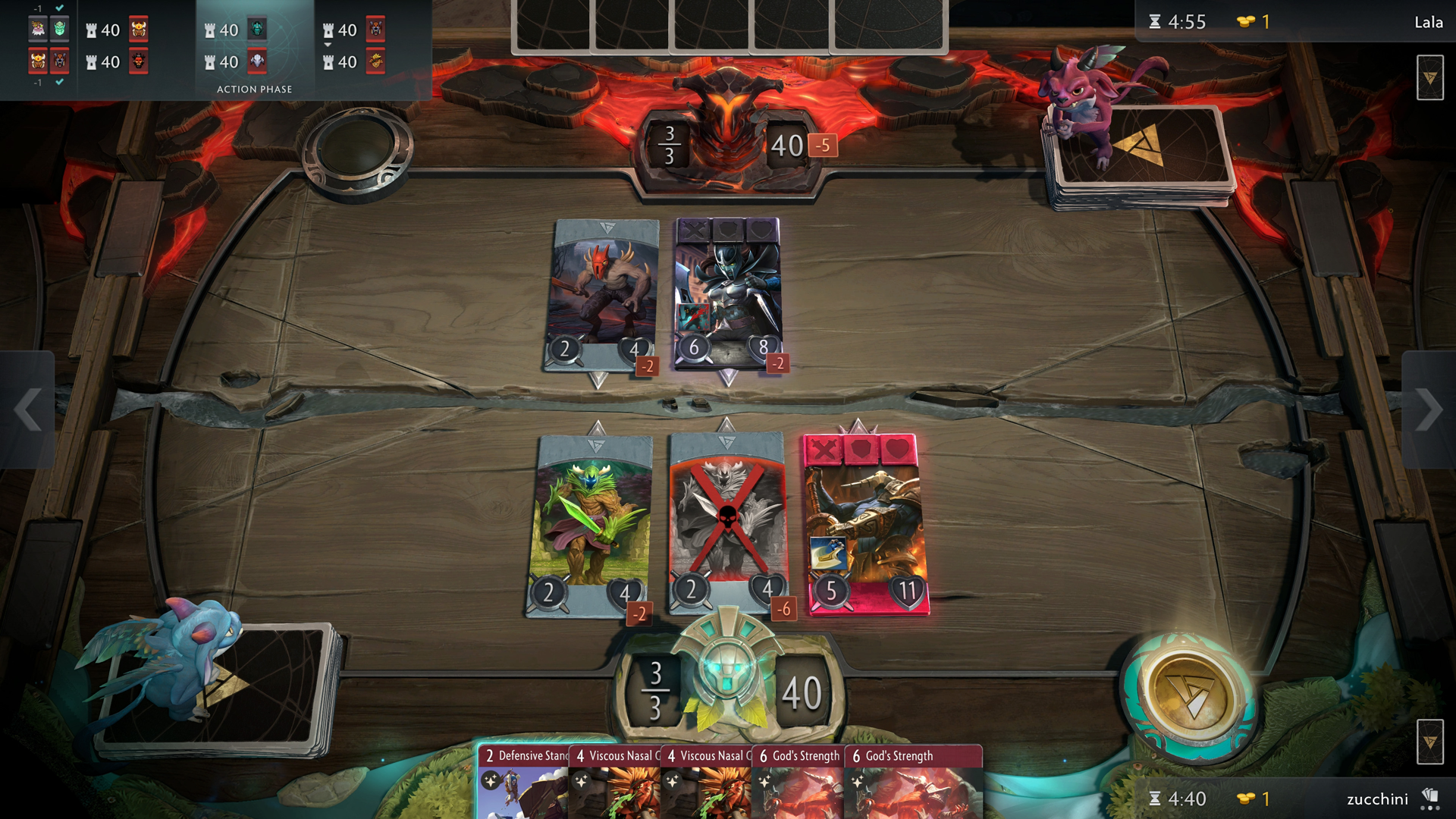
On the subject of cost, Artifact is also resolutely not going to be free-to-play. Newell explains why: "If time is free, or an account is free, or cards are free, then anything that has a mathematical relationship to those things ends up becoming devalued over time, whether it's the player's time and you just make people grind for thousands of hours for minor, trivial improvements, or the asset values of the cards, or whatever. That's a consequence. So you don't want to create that flood of free stuff that destroys the economy and the value of people's time." Lest all this be seen as an assault on Hearthstone, it shouldn't be. Newell recognises Blizzard's giant is the current benchmark, and says "they do a lot of smart things". But it's also clear Valve is heading in a very different direction with Artifact.
You don't want to create that flood of free stuff that destroys the economy and the value of people's time—Newell
What Valve isn't doing is talking numbers, but from speaking to staff at the event it sounds like there will be some sort of entry edition that will get you a bunch of the cards and other content, much as Overwatch asks you to pay for the base game to get in the door. Beyond that, you can buy and crack packs as normal, which Newell says Valve is determined to make a spectatable event. Whatever money you do pump into packs will be partly used to fund major tournaments in much the same way that sales of The Compendium and Battle Pass inflate The International's prize pool each year. Speaking of esports, Valve is already lining up a major with a $1m prize pool.
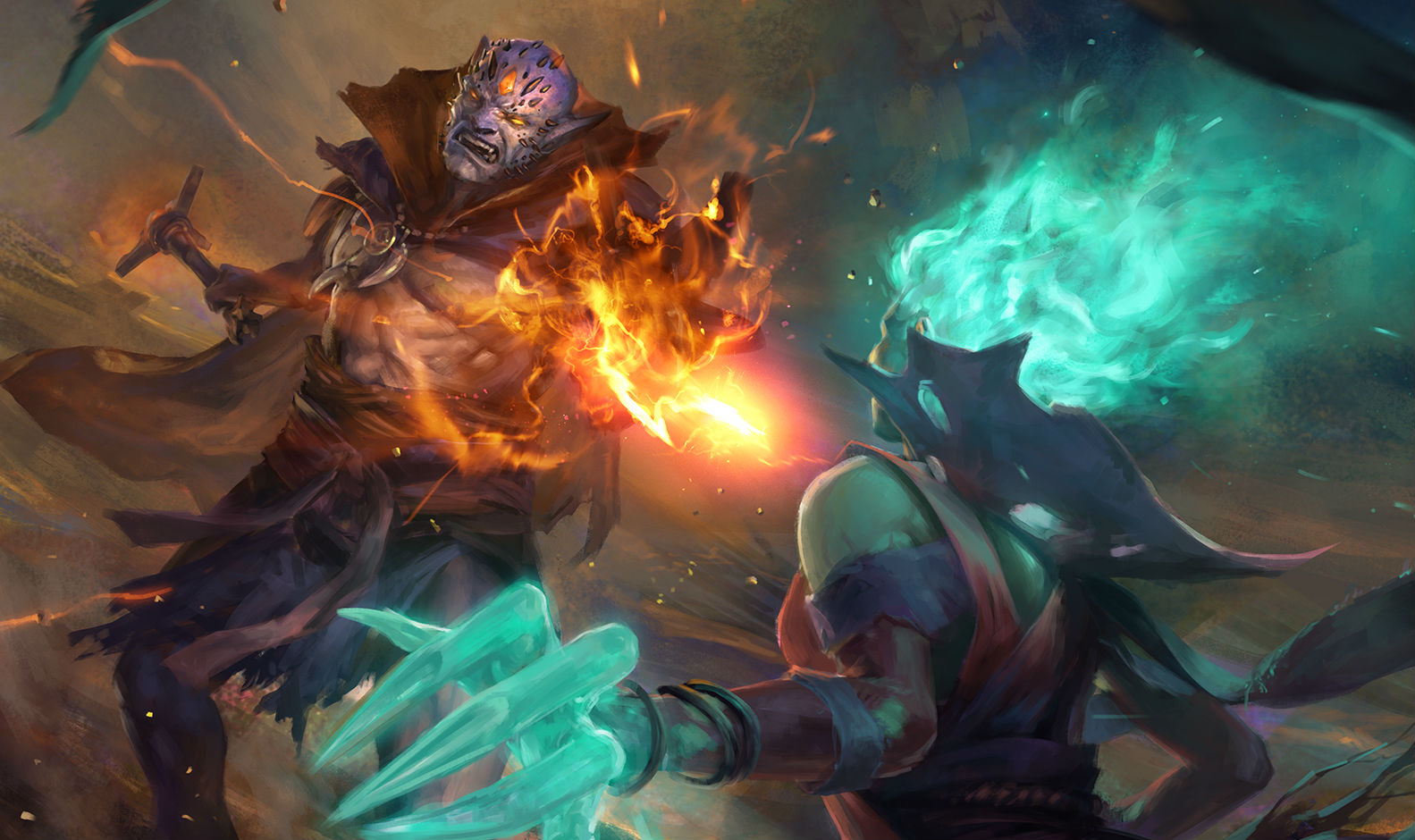
How easy Artifact will be to parse for spectators remains to be seen. After my playtest we were treated to a tournament between some well known card game pros who I'm forbidden to name. Without being familiar with the meta of Valve's closed beta test, it was hard to follow the ebb and flow without detailed explanations from the developers watching. But their excitement was infectious. The final series featured some crazy games in which the designers were shouting wildly divergent lines of plays at each other, only for the pro to pick something else entirely. It's that potential for heated strategic debate that I think suggests Artifact could have scope as an esport. If it does happen, my expectation is that viewing in client will be the way to go, so Valve can expose all sorts of cool stats about each deck. Something Hearthstone fans have been begging for since forever.
The good kind of random?
Of course, any mention of esports and card games will have some readers eye-rolling in aisles. And look, I get it. I lived through Hearthstone's Yogg-Saron meta. I asked Garfield about the role RNG has to play in Artifact, and his response was much as expected: Yes there's some randomness in the game, because hey it's a card game and chance can create exciting moments, but he said the kind of RNG effects which Artifact uses are the ones that can be controlled and mitigated by skilled players. In his view, it's the good kind of RNG. Which he would say, but bear in mind he is literally Richard Garfield, and Magic doesn't tend to get dinged over high-roll randomness in anything like the same way Hearthstone does.
Also bear in mind I'm basing my observations off a sample size of two games, but none of the cards I encountered seemed egregious in terms of RNG. The most notable one was a spell called Eclipse, which fires a volley of 3 damage bolts, the number of which depends on how many rounds the blue hero card Luna has spent on board. Pretty random, then, but also the kind of randomness you can direct by trying to create a board state that's likely to give you the best odds of landing the bolts where you want. The other kind of randomness comes from where the creeps end up spawning each round, and the items you get offered during each Shopping Phase. But brilliant though the Blink Dagger is (it gives a hero +2 attack and lets you teleport to another lane), in terms of impact not being offered a Blink Dagger isn't going to be what costs you the game. Your ability to pilot your chosen heroes and cards across three lanes, pivoting strategies when needed, is going to be the biggest determinant of whether you win or lose.

Impish design
There's so much more to say, but I feel like I've somewhat emptied my skull. I do need to note that it looks fabulous, thanks to the Source 2 engine. Every single piece of art in the game is new, and the style is bold and consistent—as evidenced when you right click a card to blow it up to screen height size. Likewise the spot FX and animations for big spells are already impressive. I especially liked Zeus' thunder spell, which sees the camera swing down and swoop across all three lanes as lightning blasts heroes and creeps. The most popular piece of visual design, though, is certain to be the cheeky imps which sit on each players' deck, scampering between lanes with you, and gesticulating wildly as the turn timer gets close to running down. I imagine Valve will add a sizeable pile to its Smaug-like fortune when it starts selling alternate versions of those.
That said, I didn't leave Valve with any sense that Artifact is the cash grab I've seen some predict it would be. Far from it. At the outset Newell said Valve wants Artifact to do for card games what Half-Life 2 did for singleplayer action games. That's an amazing claim to make. Outrageous, almost. Unless you're Valve and you actually did make Half-Life 2 and now you're making a digital card game with Richard freaking Garfield. This is just the first swing of that shiny pickaxe. There's plenty to clean up, especially in terms of the some of the UI parsability, but I can't wait to see and play more of Artifact. My headache has already subsided, but the grin hasn't.
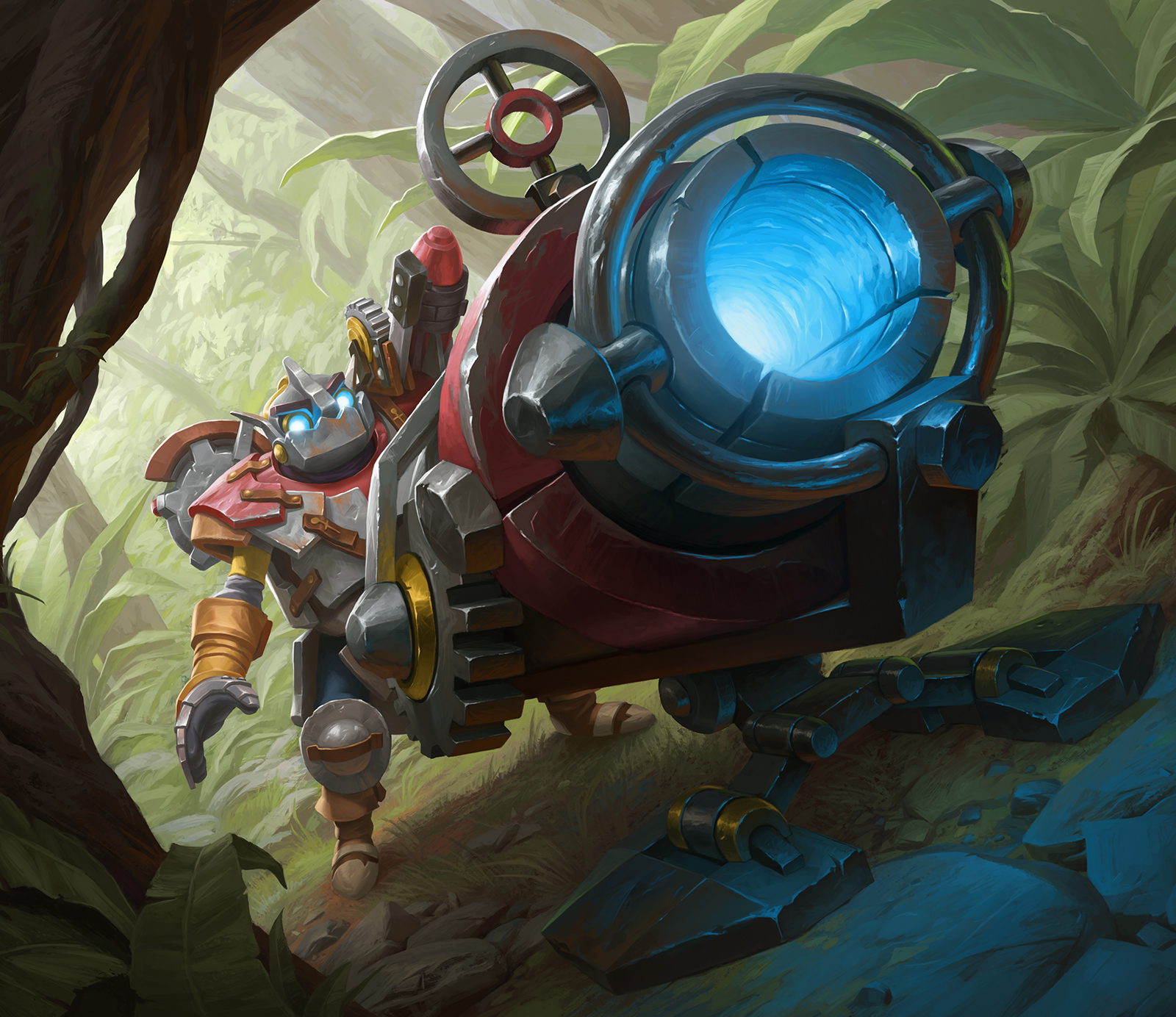
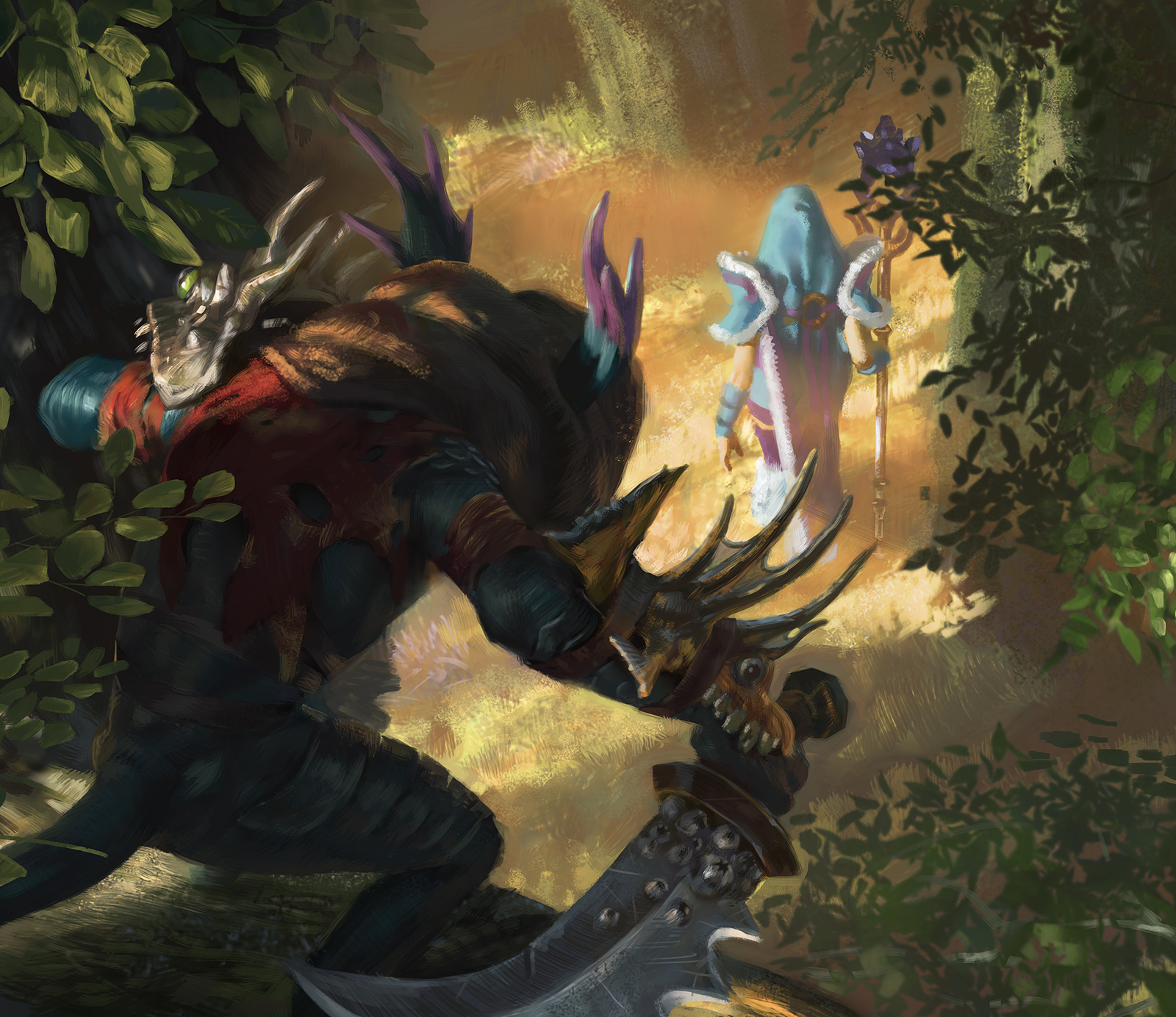
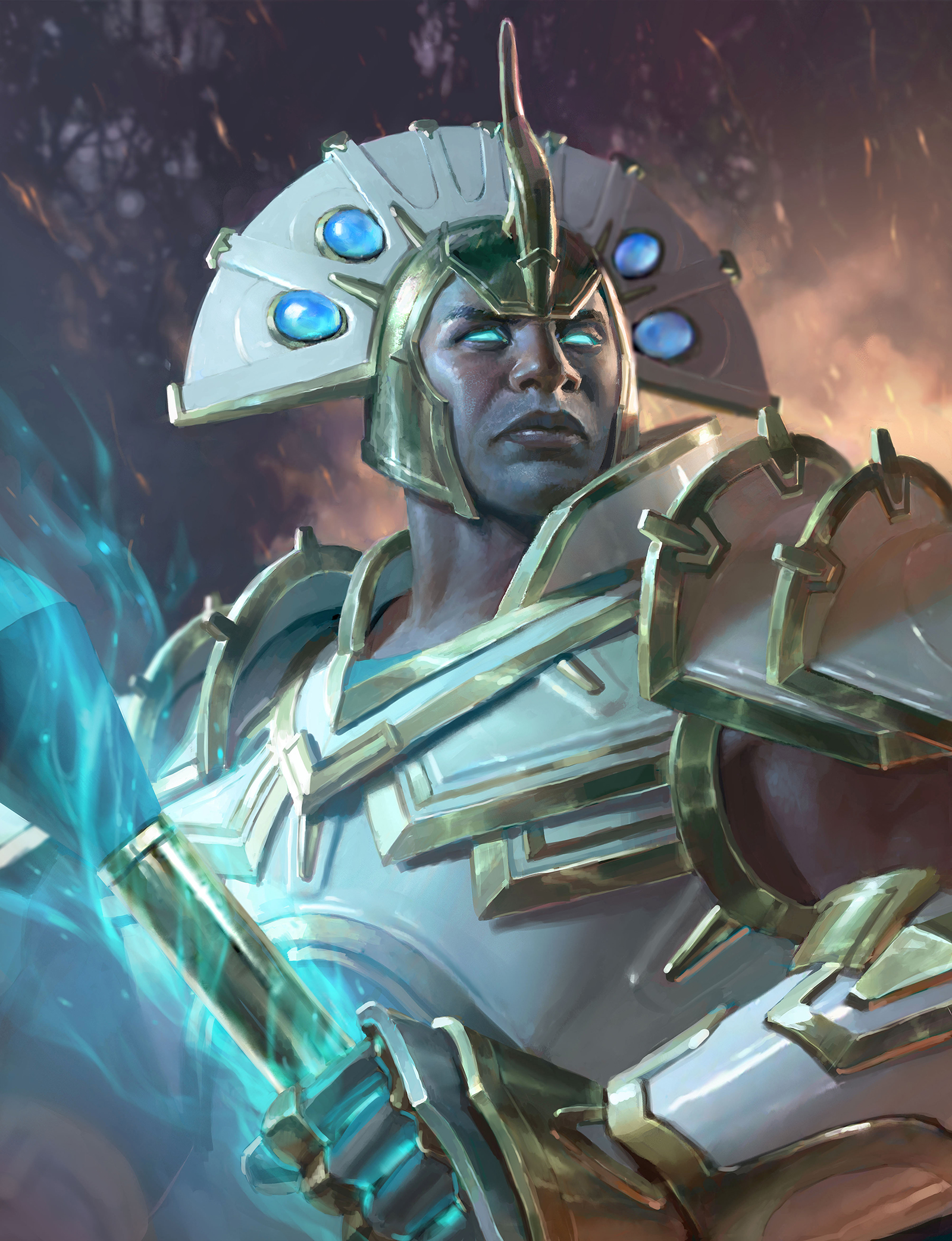
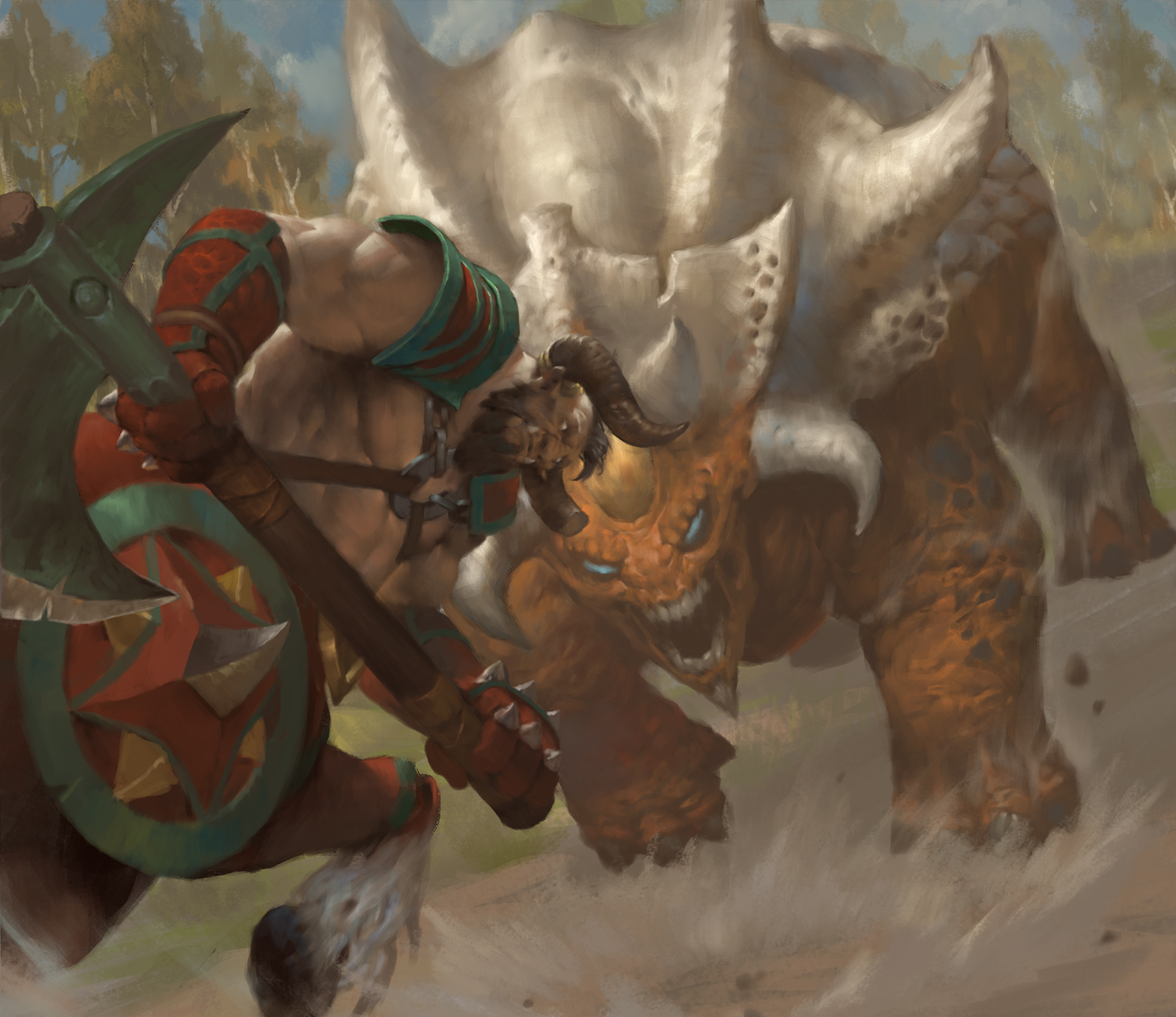

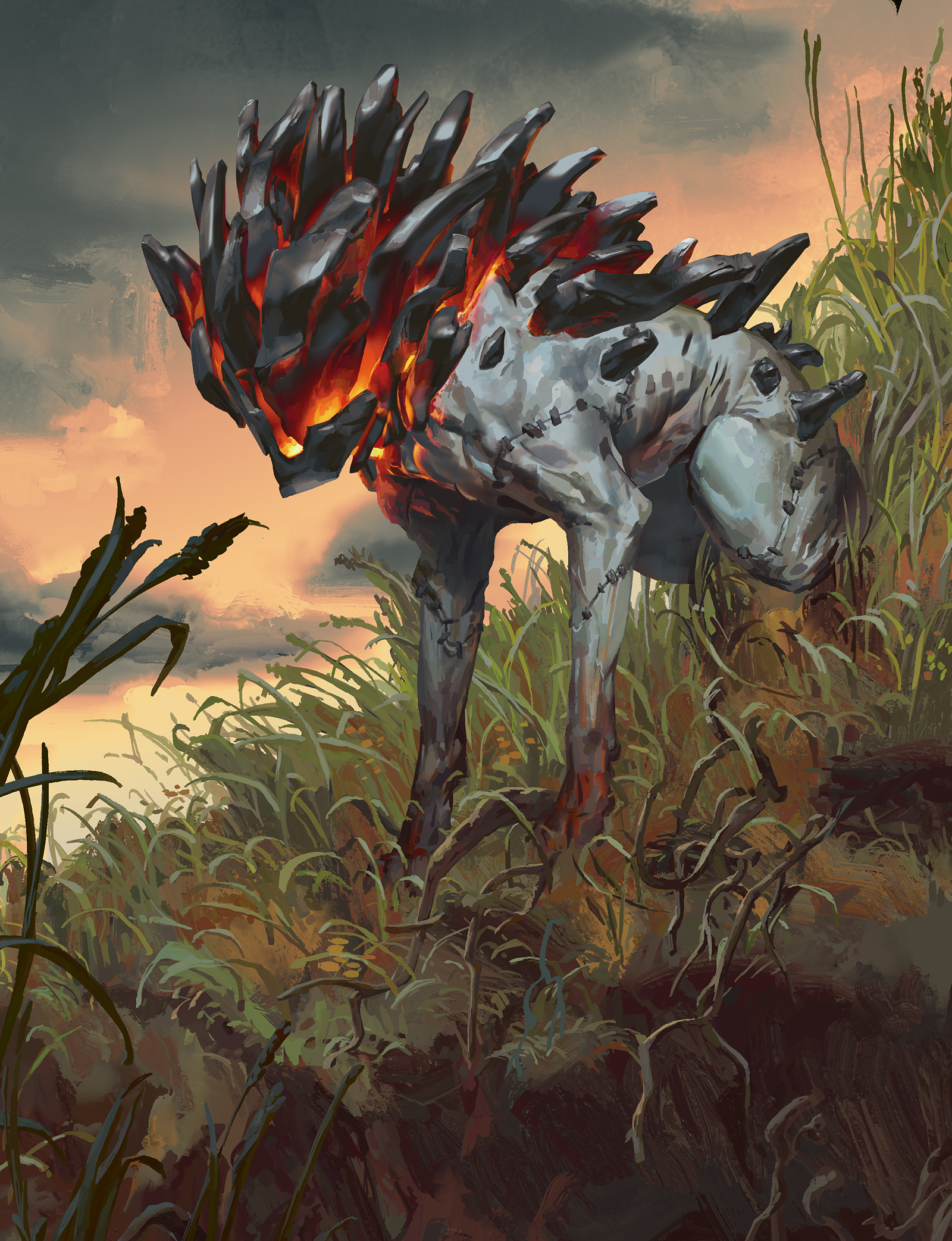
With over two decades covering videogames, Tim has been there from the beginning. In his case, that meant playing Elite in 'co-op' on a BBC Micro (one player uses the movement keys, the other shoots) until his parents finally caved and bought an Amstrad CPC 6128. These days, when not steering the good ship PC Gamer, Tim spends his time complaining that all Priest mains in Hearthstone are degenerates and raiding in Destiny 2. He's almost certainly doing one of these right now.


